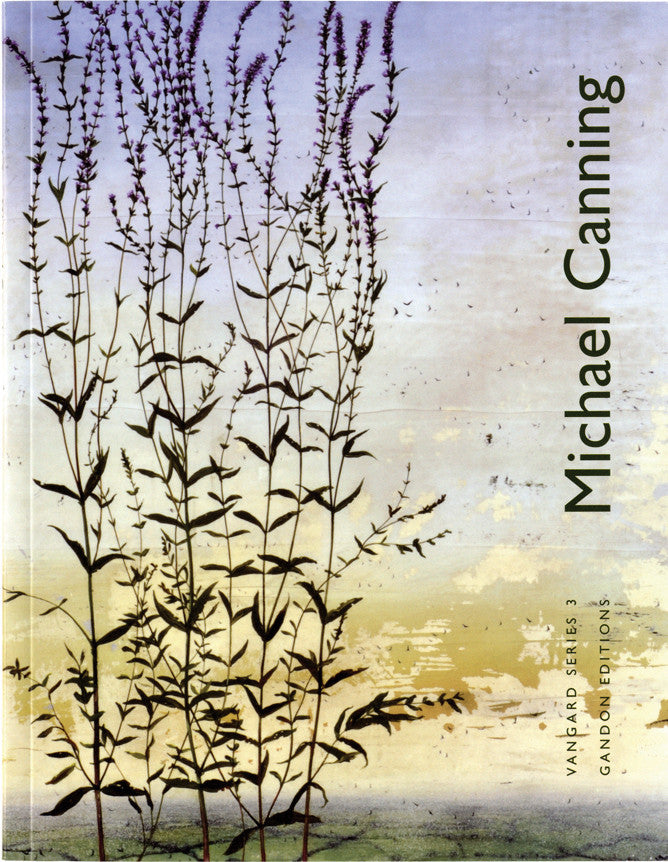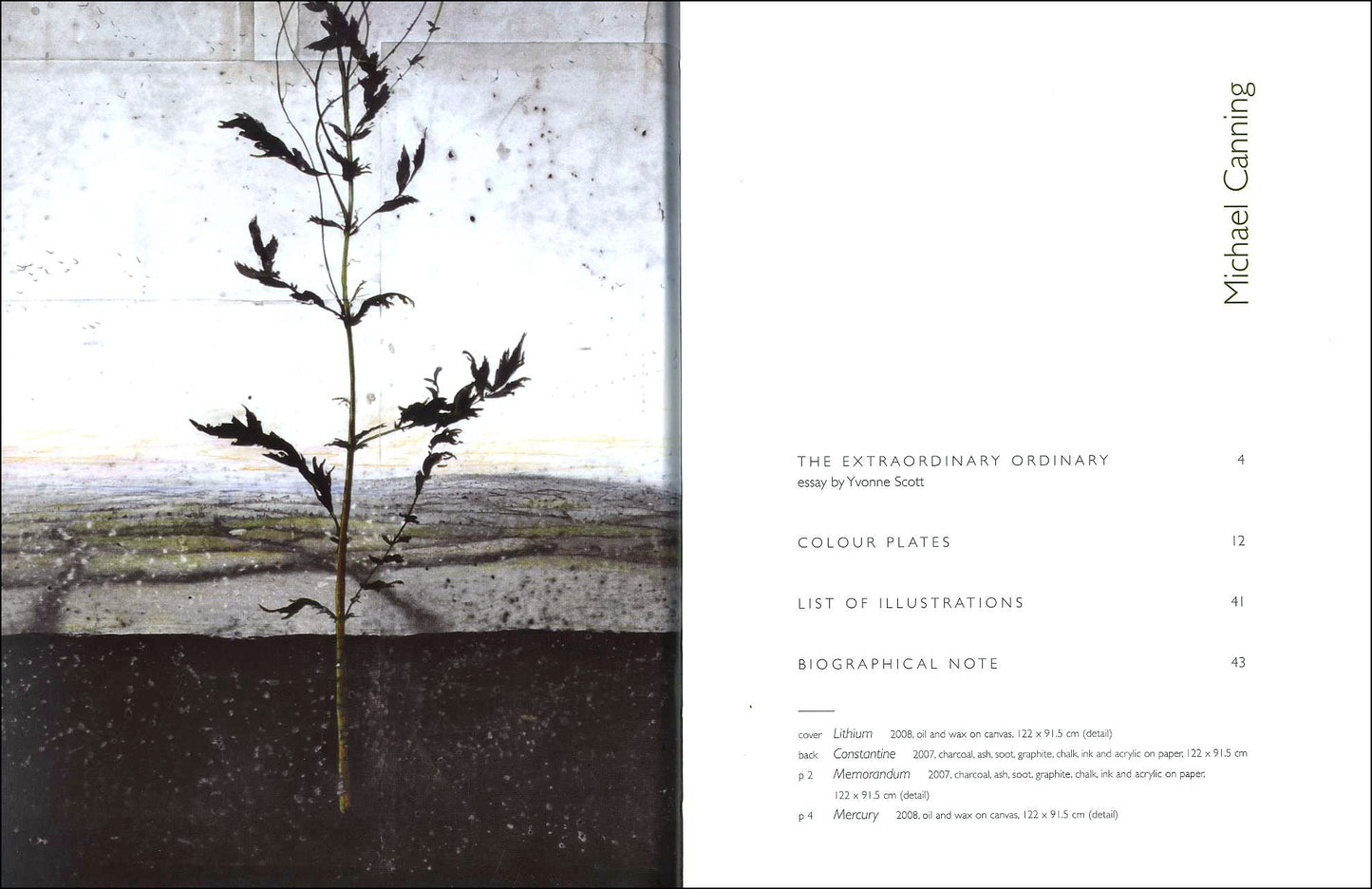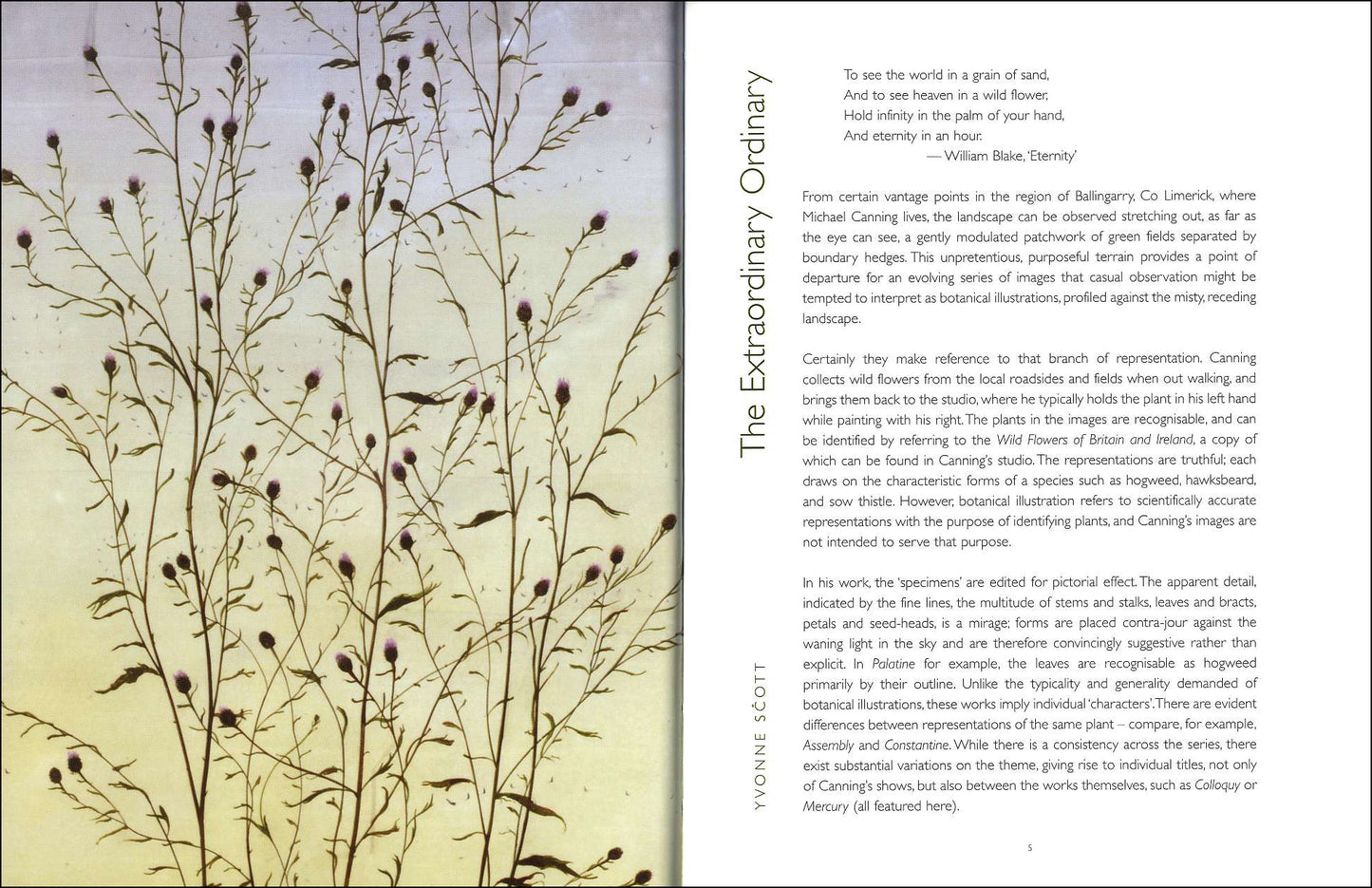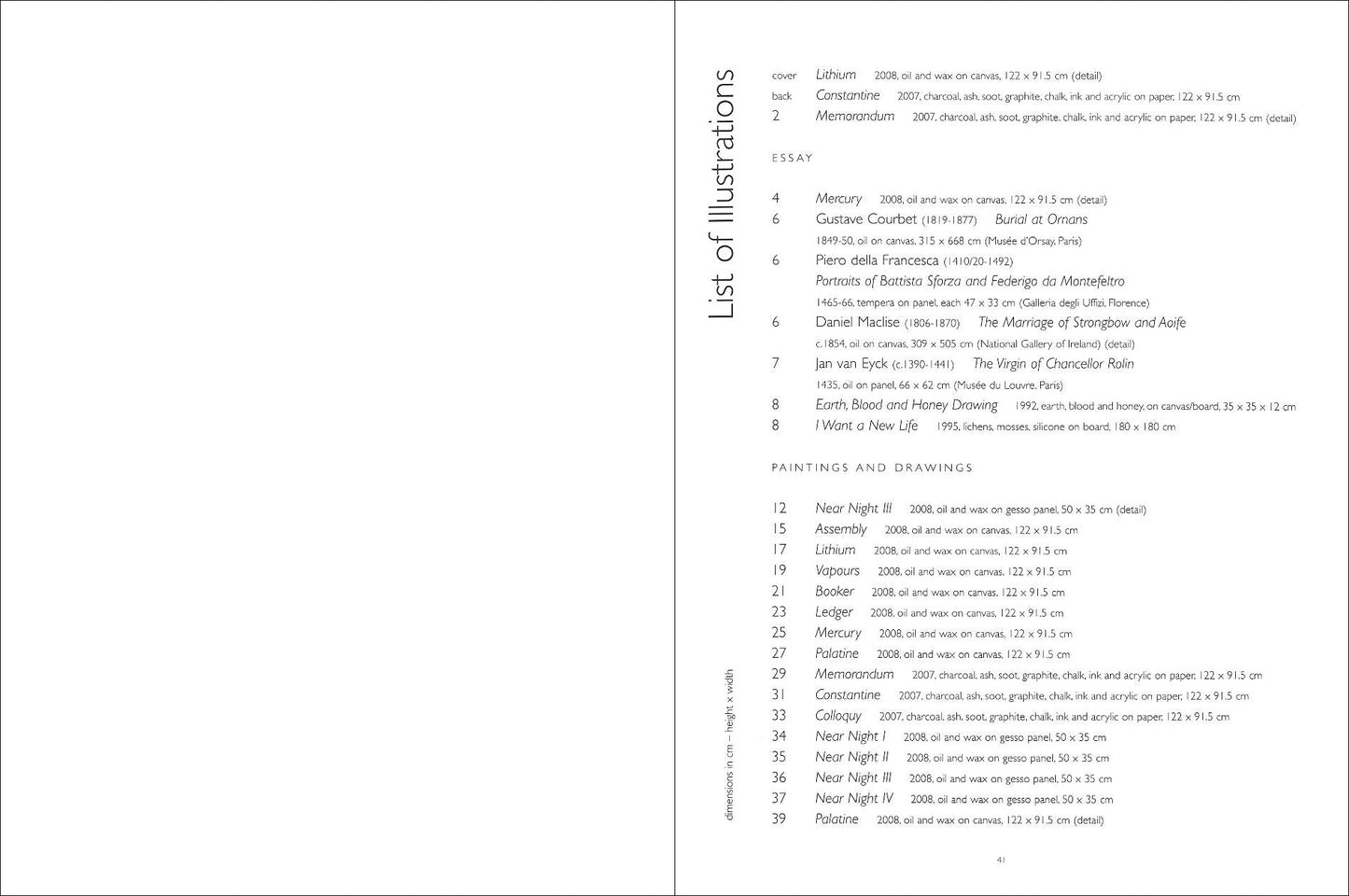Gandon
Vangard °3 – MICHAEL CANNING
Vangard °3 – MICHAEL CANNING
Couldn't load pickup availability
Share
essay by Yvonne Scott
ISBN 978 0948037 610 48 pages (paperback) 22x17cm 28 illus
Beautifully executed and expertly detailed, Michael Canning's paintings reflect the landscape that he observes around him. This unpretentious, purposeful terrain provides a backdrop for what might be interpreted as botanical illustrations profiled against the misty, receding landscape. The plants in the images are recognisable and their representations are truthful, each drawing on the characteristic forms of a species such as hogweed, hawksbeard and sow thistle. However, botanical illustration refers to scientifically accurate representations with the purpose of identifying plants, and Canning’s images are not intended to serve that purpose. Their intention lies elsewhere.
EXTRACT
"From certain vantage points in the region of Ballingarry, Co Limerick, where Michael Canning lives, the landscape can be observed stretching out, as far as the eye can see, a gently modulated patchwork of green fields separated by boundary hedges. This unpretentious, purposeful terrain provides a point of departure for an evolving series of images that casual observation might be tempted to interpret as botanical illustrations, profiled against the misty, receding landscape. Certainly they make reference to that branch of representation. Canning collects wild flowers from the local roadsides and fields when out walking, and brings them back to the studio, where he typically holds the plant in his left hand while painting with his right. The plants in the images are recognisable, and can be identified by referring to the Wild Flowers of Britain and Ireland, a copy of which can be found in Canning’s studio. The representations are truthful; each draws on the characteristic forms of a species such as hogweed, hawksbeard, and sow thistle. However, botanical illustration refers to scientifically accurate representations with the purpose of identifying plants, and Canning’s images are not intended to serve that purpose."
— from the essay by Yvonne Scott
|
CONTENTS The Extraordinary Ordinary essay by Yvonne Scott 4 |










